Non-reactivity.
Written version.
The cherry on the top of the equanimity cake is non-reactivity.
Non-reactivity in the context of equanimity describes the state of being able to notice, sit with and let pass, any feeling, sensation, thought, sound, emotion or energy.
I’ve recently been practicing non-reactivity with my phone usage…it’s amazing to notice the number of times I have an impulse to check my messages or social media. Right now, I’m in the phase of still acting on the impulse by reaching for my phone, but being able to notice what I’m doing before I swipe up to open it. Next step is to release the need to react before my arm reaches for it! It can actually be quite a fun practice, if a little uncomfortable, too!
That’s an example of how you can practice non-reactivity in many areas of your life, starting with something ‘lighter’ so that when it comes to more challenging emotions, feelings, sensations or experiences, you’re already well versed.
Non-reactivity is an amazing way to reduce the long term impact of your chronic illness symptoms. When in a high state of reactivity, the experience of symptoms can really elevate your stress levels and fling you right into fight, flight or freeze. Which means, not only is your body dealing with the original symptom/s, it’s having to process stress on top, which is a trigger in itself…and the cycle continues.
The aim is; being able to notice and name a symptom, explore it, break it down - just as we practiced earlier in the week. Instead of tying yourself in knots, becoming tense and contracted, trying to fix/change/anaesthetise, having the presence of mind and body to switch to slo-mo, relax into it and breathe through it. That presence and breath allows you to understand what, if anything, you can/need to do in a way that’s steady, kind, compassionate, nourishing and all importantly feeds your parasympathetic nervous system.
In some cases, you’ll find that those symptoms pass without having to do anything at all, because your breath, presence and parasympathetic nervous system have seen you through.
Today’s Ally Tip: I do not have to react. I do not have to try to fix or change. It is safe to let be what is.
Practice.
Today’s practice is a further development on both of this week’s practices. You’re going to go through the process of naming and describing (through curiosity and exploration) but this time, instead of automatic and mindless reaction, I want you to connect deeply to your breath to see you through.
Find a comfortable position that you can settle into for a moment. Close your eyes and steady your breath.
Lightly scan through your body and focus your attention on whatever’s speaking to you. Name (hear, think or feel) and begin to explore as you did last time. Describe the sensation, temperature, shape, movement, density, sound…
At any point, see if you notice the temptation to react. You might feel the pull to change your experience, soothe yourself, or find release through action. Instead of doing what you’d usually do, focus on the connection you have with your breath. Keep describing, keep that line of curiosity open. Slow everything to a really intricate, intimate pace. Check the tension in your body, in your face, in your shoulders. Consciously relax. Repeat, I am safe. It is safe to let be what is. This too, shall pass.
Practice this for a minute or two, with different feelings, sensations and emotions. There is no level of perfection here, and absolutely no judgement. If you can’t help but react, that’s fine! You get to give it another try.
Non-reactivity is a muscle and a practice; although it may have felt highly uncomfortable and frustrating today it definitely becomes easier the more you practice it and the stronger that muscle becomes.
Once you’ve spent some time with it, come back to the breath, feel the sensation in your hands and feet and give your toes and fingers a wiggle. Stretch, sigh and come back to the room. When you’re ready, blink open your eyes.
It’s been great practicing with you today and this week. Thank you for your openness and commitment!
